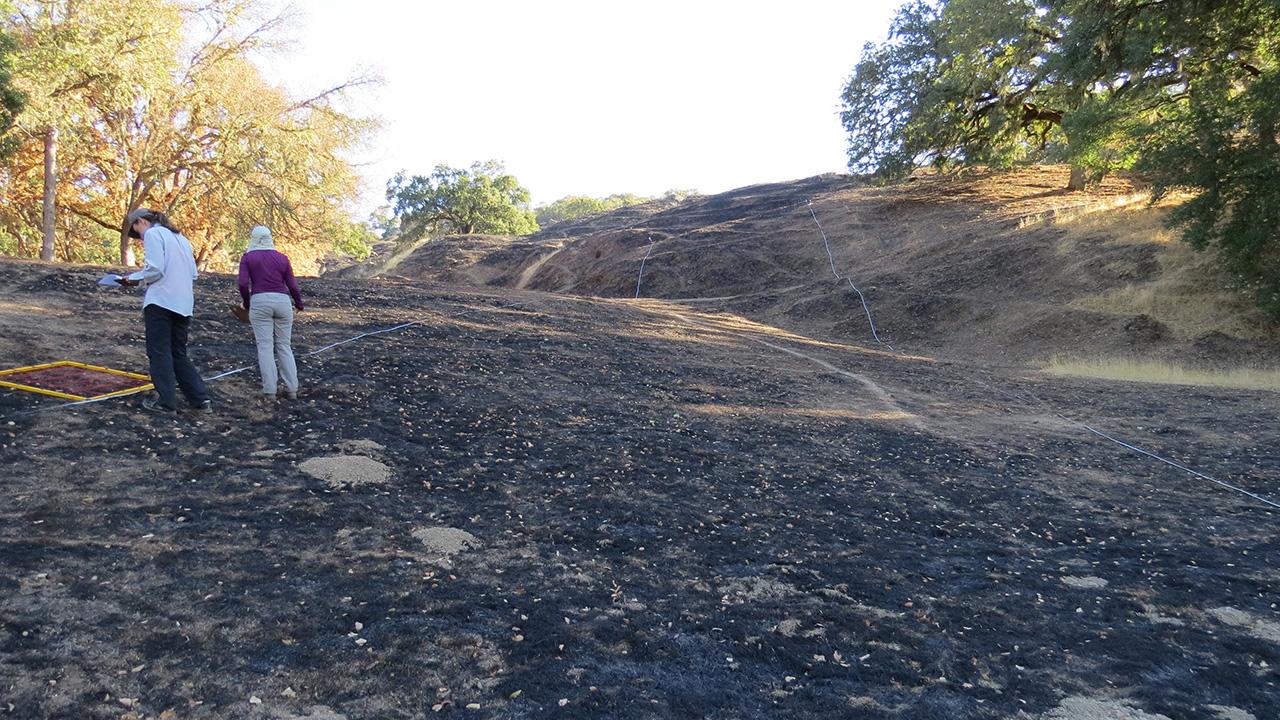
Eviner, Cadenasso post-fire projects fuel wider collaboration
Field stations lead to interdisciplinary work, richer results
Sometimes, science has to happen when the opportunity presents itself. It can't wait for the scientist to develop a rigorous theoretical framework or apply for funding. And sometimes, that opportunity leads to unexpected and rich collaboration across disciplines.
In late July 2018, the River Fire blasted through southeastern Mendocino County, eventually merging with others to become the Mendocino Complex Fire -- the largest ever recorded in California up to that time. In early August, about a week after evacuees were allowed back in, Valerie Eviner and Mary Cadenasso, and their team from the UC Davis Department of Plant Sciences were out on the charred hillsides of the University of California’s Hopland Research and Extension Center, near where the fire had sparked, to collect ash and soil samples. When grass started sprouting with the fall rains, they returned for samples of plants.
“In the soil, we wanted to look at changes in nutrients and carbon after the fire. We wanted to know what seeds survived the fire and remained in the soil’s seed bank,” said Eviner, a professor and UC agricultural experiment station ecologist. “In the plants, we wanted to look at how much plant biomass there was, whether there were any changes in the nutrient quality in the plant tissue, and which plants were part of the recovery after the fire.”
Later, a separate UC team wanted to explore how the fire would affect the meat and wool of lambs grazing on the hillsides after the fire. People at the Hopland REC put them in contact with Eviner, who shared her soil and plant samples.
“Our studies are a great example of the importance of field stations and UC Davis supporting diverse fields of study. Both are invaluable for bringing interdisciplinary work together, particularly in response to unexpected events,” Eviner said. “In our case, what our team was trying to understand about plants and the soil after a fire wound up being what another research team needed to understand the impact on livestock.”
To learn more about the effects of wildfire on subsequent lamb grazing, read this story.
Impact of drought on burned landscapes
The years following the Mendocino Complex Fire saw record-breaking drought. Eviner and Cadenasso are using their samples from 2018 as a baseline to see how burned areas responded to the drought, compared to areas that weren’t burned.
Early data show a strong difference. Eviner will present their findings in August at the meeting of the Ecological Society of America. “We’re excited!” she said.
Their work is part of 18 years of study on plant-soil relationships at the Hopland REC. With that time perspective, they also are looking at differences in the fire’s intensity across the landscape, how that affects recovery after the fire, and how those factors interact with soil type, topography and grazing history, Eviner added.
“This has given us the rare opportunity to compare burned and unburned areas,” Eviner explained. “We’re seeing what the long-term effects of the fire are.”
Media Resources
- Trina Kleist, UC Davis Department of Plant Sciences, tkleist@ucdavis.edu, (530) 601-6846
